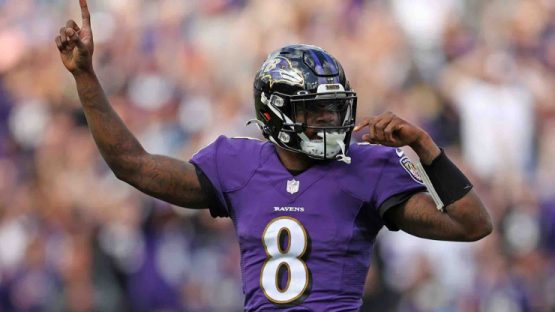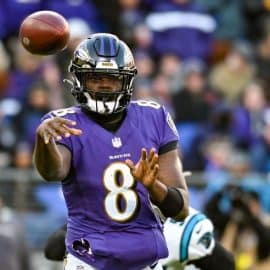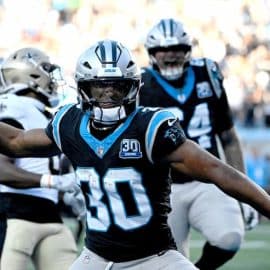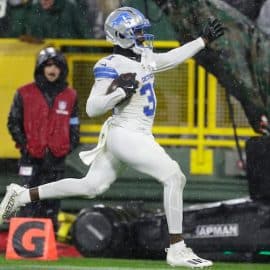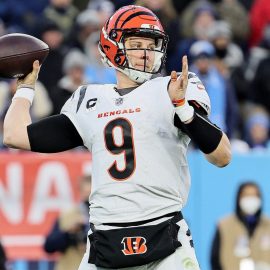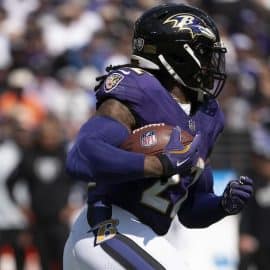The Redskins won’t become a Super Bowl team until Daniel Snyder becomes a Super Bowl-caliber owner.
The Redskins and their fans find themselves in a familiar place – out of the playoffs yet not bad enough to get a Top-3 Draft pick.
In typical fashion, fans are ready to flog the innocent and hang the guilty. Hog Heaven’s greatest fear is that owner Daniel Snyder is ready to do the same. Disaster ensues when The Danny gets too hands on with football decisions.
Yet, the Redskins are not nearly as bad off as fans feel. The Redskins are a perfectly average team. Sports books set the preseason over-under line at 7.5 wins. The ‘Skins finished 7-9. Washington is 24-23-1 in regular season games since Kirk Cousins was named QB starter in 2015.
The Redskins won’t become a championship caliber team until Snyder becomes a championship caliber owner who builds a championship caliber operation. The concept goes beyond the roster.
It’s time for reflective leadership by the guy at the top.
Hog Heaven took notes over 20 years while working for IBM and with his mid-market client base. The Redskins mimic those mid-market accounts in revenue and employee size. The best leaders we saw did these four things when under adversity.
The guy at the top was loyal to the strategy above all else.
Of course, you must have a genuine strategy for real competitive advantage over your rivals. The Redskins have a strategy, but is it Snyder’s own organizational strategy, or if he is renting it from others like Bruce Allen, or Joe Gibbs?
Snyder’s impulse is his consistent quest to recapture the Redskins of his youth, whether by luring Gibbs out of retirement, stadium designs with a faint resemblance to good old RFK, or gold pants on the home uniform. That’s not strategy. That’s hindsight.
Look forward instead.
Bill Belichick has a football strategy. Snyder, or anyone, can read it in Strategy Concepts of Bill Belichick: A Leadership Case Study of the New England Patriots Head Coach.
Winning off the field means having a true organizational strategy. Yeah! Boring as beige. But Snyder must have one and he is the only one to own it. Your core strategy protects you from reactionary blunders.
Speak the vision.
If you have your strategy, you can speak your strategic vision. Snyder rarely speaks. (That may be wise.) Inside your group, however, every team member should know the vision that they’ve heard from you. The vision is the beacon that guides their action as if you are standing over their shoulder. The vision goes beyond personalities.
So often it seems that Snyder’s sole vision to find the next Joe Theismann.
Know your real team.
Snyder’s real team is his front office, especially the senior executives, Bruce Allen, Eric Schaffer, Doug Williams, Scott Campbell, Jay Gruden and the anonymous (to us) executives charged with fan allegiance.
His direct reports are small, but the boss must know well the core of his team. Too often in his early years, Snyder preferred to hang with favorites on the roster while home-grown talent was abandoned. Every player should feel respected by him and in turn, personally loyal to him. Small gestures go a long way. But players are not the prime movers of his strategy.
I asked my favorite boss for the secret of his success. His four-word response? Good people, well managed.
Too often, I watched struggling companies fire people to solve problems. It rarely worked. The staff was locked in on systems and practices made outdated by changing conditions. The guy at the top was the only one with the juice to break that cycle. What did the team need to get better results? What is outdated?
My boss’s good advice could be amended to, “Good people, well managed, well resourced.”
The Redskins have some successful with that. Other franchises are poaching his executives and coaches.
I know I'm one of the few who feel this way, but I believe Bruce Allen has done a good job. What? He kept spending in check, Cap in good shape, FA signs above average (Z Brown, Swearinger, Pryor if used correctly). Maybe he saw something in regards to KC that fans couldn't see? pic.twitter.com/OTzdUVnA8l
— Ed (@WFTHISTORYPHOTO) January 1, 2018
There are many paths. An Oxford business professor says
Build to your strength.
Every professional football executive drafts players based on best talent available regardless of position (while every blogger and football tout will call mock drafts based on their perception of “team needs.”)
Strength on strength is an ingredient for strategic competitive advantage.
Example? The Redskins drafted Brandon Scherff at tackle, when they already had Trent Williams and Morgan Moses on the roster. They kept tackle Ty Nsekhe for depth when he appeared extraneous. A quirk in league seniority rules kept starter-quality Nsekhe from reaching free agency. Scherff morphed to a Pro Bowl guard.
O-line strength on strength is a Redskins identity today. Snyder’s strategic focus is to know and nurture the strengths in the entire organization. He has to (cough) win off the field.
Add The Sports Daily to your Google News Feed!
